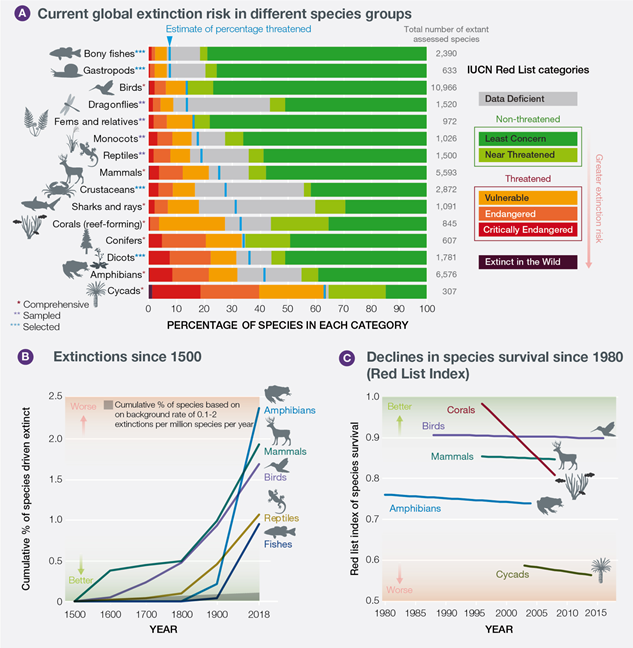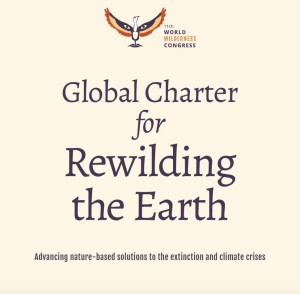Finding “Time for Nature” Means People are Part of Nature
Jun 5th, 2020 | By admin | Category: Environment/Sustainability, FeaturedBy Suzanne York.
This is the year of upheaval and change and understanding that we are all in this together, this life on our little blue dot. If the current inhabitants of Planet Earth don’t get that humans are part of the web of life by now, we are all in big trouble.To help get across the idea that people don’t exist outside of nature, this year’s World Environment Day is focused on the theme of “Time for Nature” and the environment’s essential role in “the foods we eat, the air we breathe, the water we drink and the climate that makes our planet habitable.”
The United Nations is correct, “these are exceptional times in which nature is sending us a message – to care for ourselves we must care for nature.”
Unfortunately, we are facing the Sixth Mass Extinction and not doing enough to care for the environment upon which our lives depend. Practically every week a study or news story comes out on species on the brink of extinction. One of the most devastating reports came out last year, when a landmark study by the Intergovernmental Science-Policy Platform on Biodiversity and Ecosystem Services (IPBES) found that 1,000,000 species are threatened with extinction.
According to research published this week in the Proceedings of the National Academy of Sciences (PNAS), we are rapidly headed toward the point of collapse faster than scientists previously thought. Their analysis found that five hundred species are likely to become extinct over the next two decades. Scientists know of 543 species lost over the last 100 years; normally that would take 10,000 years to occur.
The experts state the acceleration of the extinction crisis is certain because of the still fast growth in human numbers and consumption rates. The scientists said that rising human population, destruction of habitats, the wildlife trade, pollution and the climate crisis must all be urgently tackled.
This is obviously grim news. How can the world truly get closer to adhering to “Time for Nature” when faced with environmental catastrophe? Below are some ways to bring humans more into balance with nature.
Integrating Family Planning with Conservation
As the above PNAS study pointed out, human population growth is driving extinction rates. At nearly 8 billion people on the planet, all have an impacted, albeit to varying degrees. Populations are still growing rapidly in many places around the world, putting enormous pressure on the environment.
While many people may not connect voluntary family planning and nature, it is actually a way to not just help protect ecosystems but also create healthy communities. We can better support the rights and needs of people by addressing the unmet need for contraceptive services and reproductive health. When basic needs are met, people can then focus more on protecting the environment.
Population, Health and Environment, or PHE, is an integrated approach linking family planning, health and conservation that recognizes the interconnectedness of people, their health and their local environment. Perhaps most importantly from an environmental perspective, this model acknowledges the links between reproductive health and the well-being of communities in biodiversity-rich areas, and the health of the natural environment upon which all life depends.
There are a number of PHE projects in much of Africa and Asia, including Conservation Through Public Health, PHE Ethiopia Consortium, Path Foundation Philippines and Blue Ventures.
Rights of Nature
Rights of nature is one way that offers a path for true change for protecting the environment. Rights of nature laws eliminate the authority of a property owner to interfere with the functioning of ecosystems and natural communities that depend upon that property for their existence and flourishing. Environmental rights do not stop all development; rather they stop development and use of property that interferes with the existence and vitality of those ecosystems.
Simply put, it is viewing nature not as property and something to be exploited, but as a living, breathing entity. New Zealand, Ecuador, Colombia, India and even municipalities in the United States have recognized the rights of nature to varying degrees. Read more at Rights of Nature & Mother Earth: Rights-based Law for Systemic Change, published by the Global Alliance for Rights of Nature.
As extinctions continue, deforestation rates increase, and climate change impacts increase in severity and displace entire communities, people will have to realize a different relationship with nature is needed.
Rewilding
Another potentially game-changing idea is the concept of rewilding, which can be defined as the process of protecting an environment and returning it to its natural state of being. Rewilding Europe calls it “a progressive approach to conservation. It’s about letting nature take care of itself, enabling natural processes to shape land and sea, repair damaged ecosystems and restore degraded landscapes.”
The idea of rewilding is gaining traction and recognition from the local communities to international gatherings. This year was to see the launch of a global charter at the World Wilderness Congress, but it was postponed due to COVID-19.
The Global Charter for Rewilding the Earth was released in April 2020. Its main message is rewilding must be prioritized as a critical solution to our current climate and biodiversity emergencies.
Here are the Charter’s overall objectives:
We must keep wild that which is still wild and accelerate rewilding efforts in areas that have been diminished. By creating an interconnected system of wild habitats capable of supporting life’s full variety and richness—implemented through voluntary, participatory actions of individuals, nongovernmental organizations, businesses, and governments—degraded lands and waters will be restored. Such a system would support human welfare by contributing to climate stability, clean air and water, pollination services, beauty, physical and mental health, moral satisfaction, and other life-supporting services that undergird flourishing human communities.
In a spirit of hopefulness for the future of life, the Global Charter for Rewilding the Earth calls on individuals, communities, nongovernmental organizations, corporations, governments, and other institutions to advance efforts to protect remaining large wild areas and to support rewilding projects around the world. A global rewilding movement—embraced by the broadest spectrum of constituencies and encouraged by governmental policy—can ultimately weave wondrous blue and green ribbons of wildness that wrap the Earth in beauty, offering the promise of a better future, with freedom and habitat for all.
The above solutions are a sample of paradigm-shifting concepts that can help protect nature and also improve the lives of people. They should be embraced this World Environment Day, if we are to keep the planet intact for nature and for humans.
In the words of renowned biologist Thomas Lovejoy, when discussing the relationship between people, the environment and the current coronavirus – “The lesson for humanity from this pandemic is not to be afraid of nature, but rather to restore it, embrace it, and understand how to live with and benefit from it.”
In the end, the planet doesn’t ‘need’ people for protection or to find “Time for Nature”. Mother Nature will take care of herself. But if we want our human experiment to continue, with our health and well-being a top concern, we’ll have to understand that we are a part of Nature, not above her.
Suzanne York is Director of Transition Earth.

![Mountain gorilla, Bwindi Impenetrable Natl Park [photo: Suzanne York]](http://populationgrowth.org/wp-content/uploads/2020/06/gorilla-closeup-300x220.jpg)


![[image: America's Charities]](http://populationgrowth.org/wp-content/uploads/2020/06/World-Environment-Day_social-media-300x169.jpg)